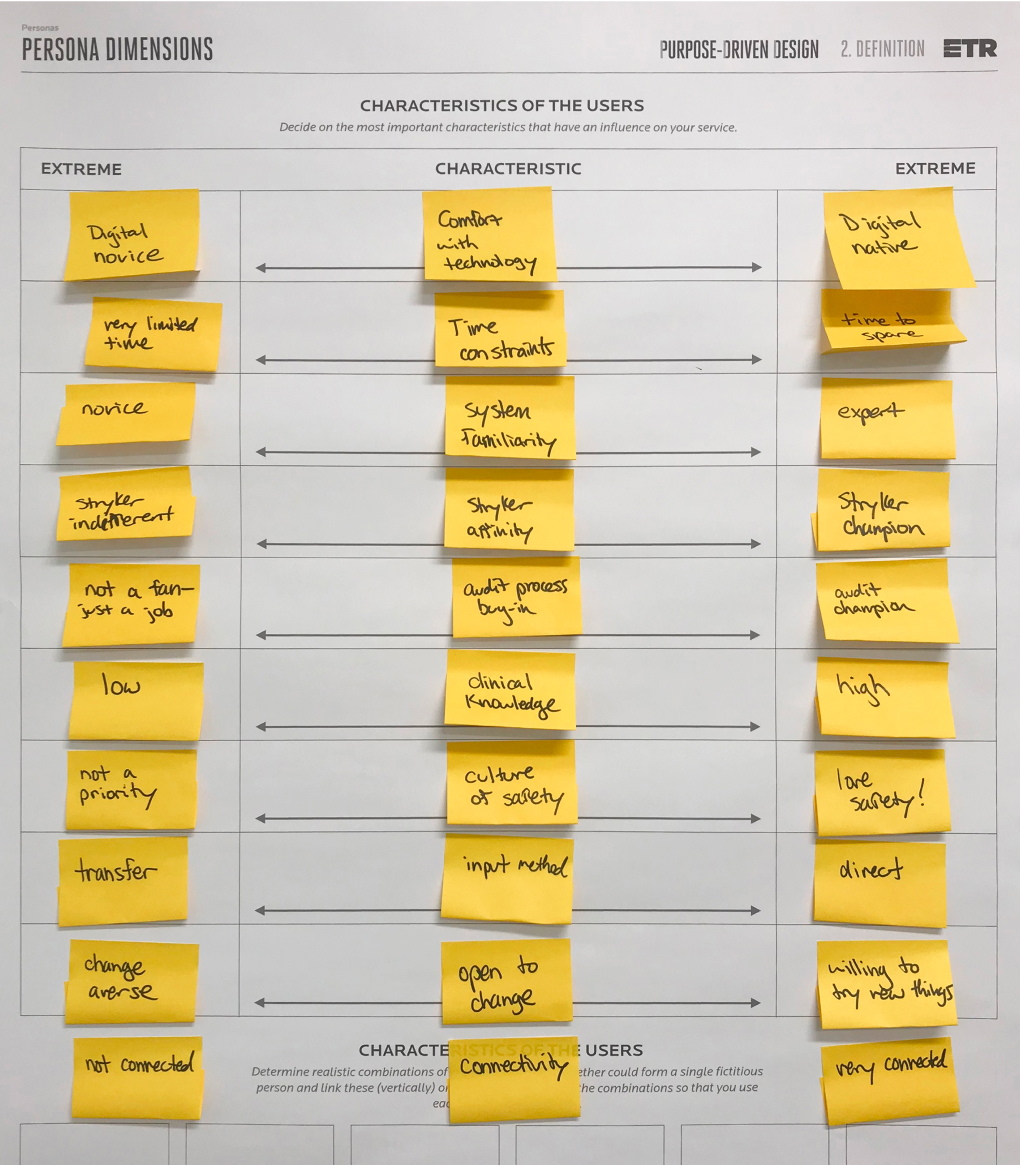Solving a major hospital pain point with data-focused UX design

STRYKER
We developed a comprehensive UX strategy for a product that helps reduce hospital-acquired injuries.
SERVICES
STRATEGY
DESIGN
PROJECT INFO
Hospitals burdened by a preventable problem
Across the world, healthcare institutions struggle with the problem of hospital-acquired injuries (HAIs) suffered by patients in their care. Most commonly referred to as bedsores or pressure ulcers, these injuries can cost hospitals billions of dollars annually. However, with the appropriate measures, HAIs are almost entirely preventable.
Stryker takes the challenge head-on
The Stryker Corporation, a Fortune 500 medical technology firm, produces high-end hospital beds with automated features that intermittently reposition patients.
Combined with best-practice nursing procedures, they can significantly decrease the occurrence of HAIs. To present these findings to hospital clients, Stryker needed accurate and actionable data.

Savings to hospital
$1M
Users personas defined
3
Types of data visualization covered
8
Key design requirements identified
7

IMPROVING USABILITY
PRIPA – a pilot platform with data collection challenges
Stryker’s promise that their beds reduce the occurrence of HAIs when combined with best-care protocols hinged on finding out to what extent caregivers routinely comply with the procedures necessary to optimize the bed’s features. To collect pressure injury data from caregivers, Stryker launched a pilot platform called PRIPA (Pressure Injury Prevalence Audit). However, due to usability and performance issues, it was poorly adopted by Stryker’s hospital customers.

Reframing the problem through a design lens in an intensive workshop
To help Stryker address the usability and performance problems in PRIPA, we ran an intensive two-day, user-focused design workshop with the key stakeholders on the initiative. The goal was twofold – to share our expertise and insights on user experience for effective data collection and visualization, and to provide Stryker with a core UX strategy their internal teams can use as foundation for PRIPA’s redesign.

Laying the foundations through comprehensive knowledge sharing
Before we could start developing a strategy, we needed to establish some common ground with the stakeholders. To onboard them to the world of UX design, our team prepared presentations on some key aspects relevant for improving the product:
Five UX best practices and principles around how users process information
The type of common errors people make and how to avoid them
Understanding the proper application of user interface elements
Data reporting and visualization best practices and principles
Developing a UX strategy based on user personas and defined challenges
With the theoretical groundwork established, it was time to get into immersive, collaborative UX strategy exercises.
The idea? To discover what product or service needed to be created, who it would serve, and how it would meet Stryker’s high-level business goals.

Persona dimensions
We captured the most relevant attributes and characteristics to consider for the people using the PRIPA platform on our Purpose-Driven Design Persona Dimensions Canvas and came up with three personas:
The nurses charged with collecting the data directly from their patients
The nurse managers responsible for aggregating nurses’ data into a single source of truth
The hospital administrators responsible for generating and disseminating reports that demonstrate the data’s impact on the business side of hospitals
Design challenge
Armed with the insights from the persona work, we were able to proceed with the Design Challenge exercise. We defined high-level business goals the PRIPA sought to address, identified the most important users, and formulated our Design Challenge statement.
How might we design and build a scalable platform that provides for consistent and accurate data collection while putting the least possible burden on users?

How might such a platform help Stryker to uncover and articulate the story of customer success through better outcomes?
Defining requirements
Based on all of our findings, we were able to define and prioritize a core set of eight user-centered design requirements for the platform.

For example, the platform had to accommodate the input of error-free data by floor nurses as quickly and easily as possible in an on-the-go environment with constant interruptions and distractions.

Working on user personas, we realized that the only way to get nurses to embrace a new platform and adopt a new protocol was to demonstrate to them that this was not just another administrative task – that they were actually getting time back to care for patients.
The result?
A resounding success.
Based on all of our findings, we were able to define and prioritize a core set of eight user-centered design requirements for the platform. For example, the platform had to accommodate the input of error-free data by floor nurses as quickly and easily as possible in an on-the-go environment with constant interruptions and distractions.

The two-day workshop and our subsequent report with creative direction strategy recommendations provided our partners at Stryker with valuable insights into the nuances and practical application of effective UX design – optimized for their specific end-users.
They came out of it with a solid core UX strategy upon which they could execute their bold vision of helping hospitals significantly reduce hospital-acquired injuries.
In fact, the Stryker team were so happy with the results that they extended the engagement twice.
Stryker was able to take the strategy, creative direction, and the requirements we developed together and build the final experience on their platform – paving the way for the improved adoption of this mission-critical tool.
This project was executed by our US team, formerly known as ETR. The company was acquired by Infinum in 2023.






